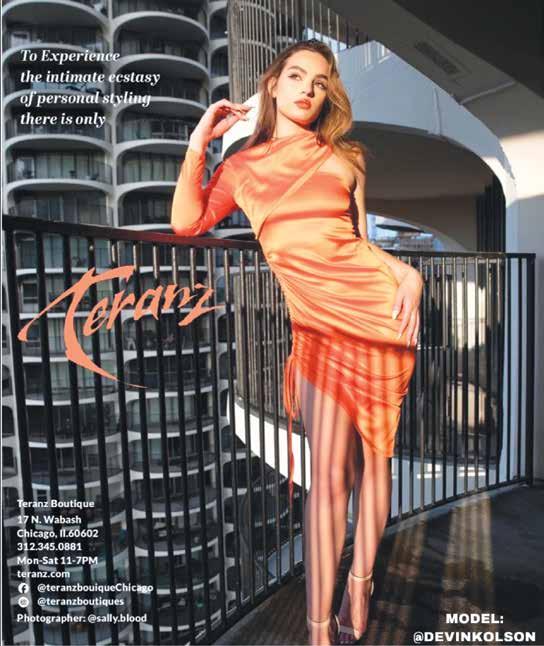
3 minute read
FASHION IS MaNY ThINGS
from March 22, 2023
by cnwmedia.com
C.L. Blackburn Staff Writer
When you think of fashion do you think of clothing first or do you picture an outfit? Do you think of a celebrity wearing something you loved?
Advertisement

Fashion is picturesque and is always making a statement. Think back to the movie

“The Devil Wears Prada,” do you recall the two main characters, Miranda Priestly, and Andrea Sachs (Andy)? What was their conflict? If you remember their bone of contention was centered around fashion—Miranda’s high regard for fashion and Andy’s disregard for it. Miranda understood the power of fashion as a personal statement and as a business. The short and skinny of it all is this, fashion, no matter how hard you may try to ignore its reality, says something about you, period. That, you can’t escape. People can look at you and observe a lot about you. They may see you as neat or sloppy; meticulous or negligent; stylish or careless, and the list goes on. Andy initially thought that Miranda was overthe-top and extreme in her relationship to fashion. What she didn’t get is that the global fashion industry is valued at $1.7 trillion as of 2022. The fashion market had a growth rate of 5.46% in 2017 and was projected to hit 6.2% by 2020. The United States fashion industry is valued at approximately $343.70 billion.
Clearly, fashion has come a long way from tribal association, social class, and stature. The NIKE phenomena revealed that little Black boys from two years old to mature Black men 60-years old wore Air Jordans’ that cost more than most little Black boys’ household incomes could afford. Yet, they found ways to buy them. It was so serious that Bill Cosby in his heyday was reprimanded for having said, “that low-income Black parents are spending too much on Nike’s and too little on “Hooked on Phonics,” and that they are failing to instill proper discipline in their “knucklehead” children who, by their speech and behavior, are dooming themselves to economic failure.” His point though is not the point here, but rather, that people find a way to buy what they want. The fashion industry knows this and appeals to those basic instincts. People find a way to manifest in their lives what they want. It’s not specific to America. When I lived in Paris, France I recall the young working women who would save their pay checks to purchase that little black Chanel dress. It was everything on both the emotional and practical level. I observed my friend Virginia (pronounced Vir-gin-nee) style that dress with a cardigan, or without, wrap a scarf around her neck or shoulders, or drape a shawl across her shoulders, or sport it with a sports coat, sharp corporate jacket, or pullover sweater and accent the waist with a belt, accent with booties, pumps, wedgies, boots or sandals, hats, purses, belts, and jewelry. Those French girls can really work a Chanel little black dress. But what we see is a well-dressed classic styled professional woman on the move. Fashion has the magical ability to do many things like shade or color distinctions that denote power and class to reinforce standard roles within society and carve out a new identification on the fringes. This may sound so crazy and yet it is so true. Remember fashion is the first recognition of who you are and who you are not. Thus, the label game, Calvin Klein, Donna Karan, and Ralph Lauren each built brands that were on a first name basis with the entirety of fashion like their European predecessors, Chanel, Armani, Gucci etc. They brought brand heat, reach and personality to build the mega businesses that set trends that put America on the map with the European superpower designers who had reigned forever as the Kings and Queens of the fashion world. They appealed to the sophisticated working woman, wives of the wealthy, and the upwardly mobile, and the ‘Nouveau
Riche’ emerging from the sports and entertainment worlds. It was very American and progressive. What a long way we have come since then, the American rappers hit the scene, and joined the worlds of sports and celebrity that opened the door for designers to afford and spend money in a big way that opened to doors a brave new world. Everybody and anybody can wear what they want when they want if it’s accessible. Gender bending dress styling and the crashing down upon the rules of what to wear when and how became the symbol and signature statements of the youth who had suddenly taken over the world of fashion. And yet in the worlds where most of us live and work the unrestricted freedom doors have not completely opened. Fashion still has meaning.










